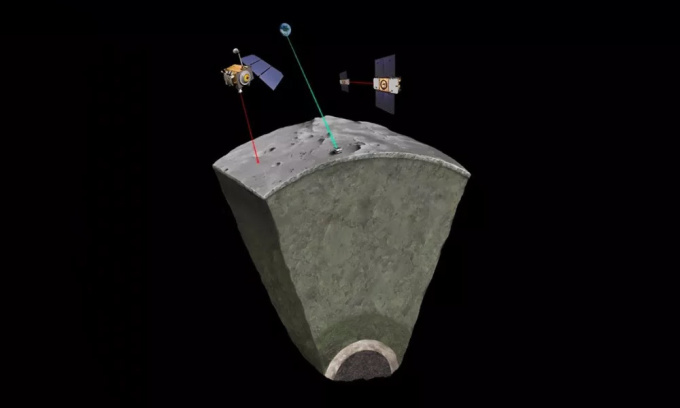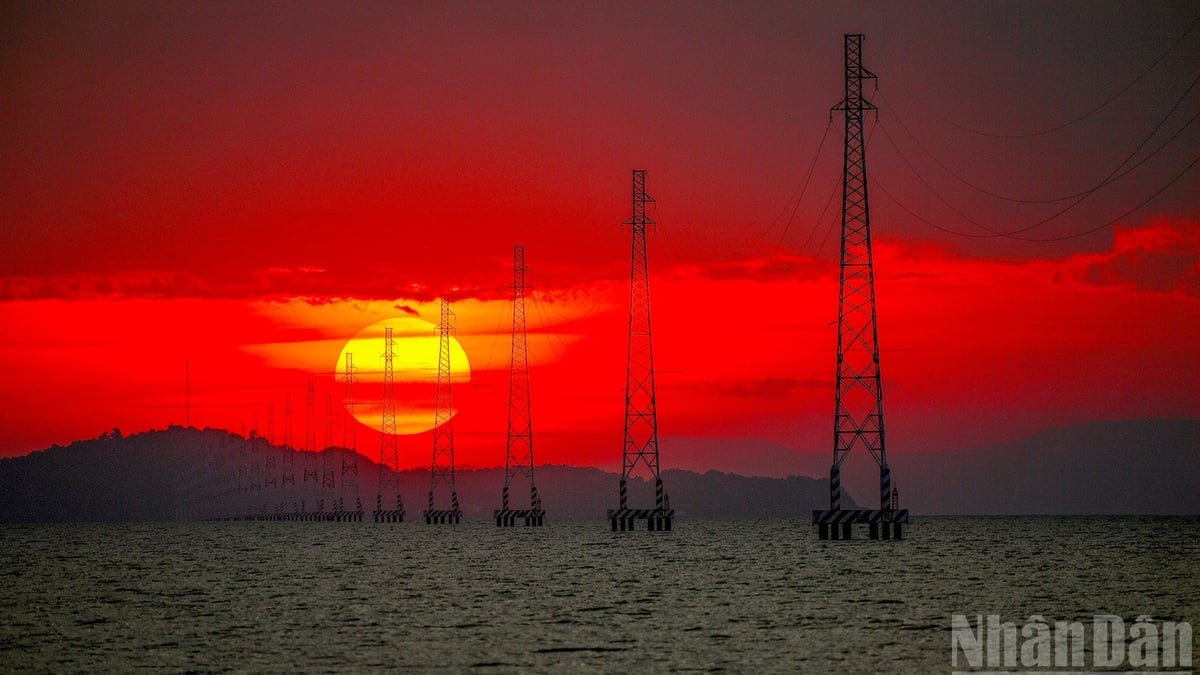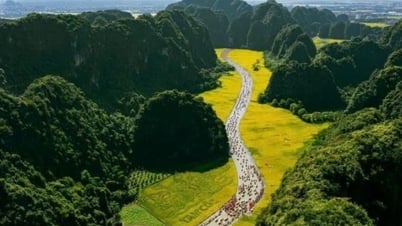After more than 50 years, scientists have confirmed that the Moon's internal structure consists of a liquid outer core and a solid inner core, containing a lot of iron.

The Moon's interior consists of a thin crust, a very thick mantle, a viscous core-mantle interface, a liquid outer core, and a solid inner core. Photo: Geoazur/Nicolas Sarter
A team of researchers from the University of Côte d'Azur and the Institute of Celestial Mechanics and Ephemeris Calculations (IMCCE) in France detailed the new findings in the journal Nature , Live Science reported on May 6.
Astronomers have wondered about the Moon’s structure long before any spacecraft landed. The first clues that the celestial body had an Earth-like interior came from NASA’s Apollo missions, which took place between 1961 and 1972. Data collected by the lander’s instruments showed that the Moon is layered, with dense material at the center and less dense material near the surface.
Only recently have scientists been able to study the vast trove of data from the Apollo missions and other spacecraft to get a clearer picture of the Moon’s interior. In 2011, NASA research showed that the Moon’s outer core is made of liquid iron, forming a molten layer where it meets the mantle. The research also suggested that the Moon’s inner core may contain more iron.
New research in May confirmed the existence of this dense inner core. Using a detailed computer model built on geological data from the Apollo program and NASA’s GRAIL mission, the team determined that the inner core is about 500 kilometers in diameter, about 15 percent of the Moon’s width. That small size may be why scientists have had trouble detecting it.
Additionally, the study found the first evidence of mantle overturning on the Moon – a process in which warmer molten material rises through the mantle. This could explain the presence of iron on the Moon's surface.
A better understanding of the Moon’s interior could help scientists unravel some of the Moon’s geological mysteries, such as what happened to its powerful magnetic field in the past. While the Moon has no magnetic field today, rock samples suggest that the natural satellite once had a magnetic field as strong as Earth’s. As agencies and private space companies prepare for new lunar missions this decade, scientists will gather more data.
Thu Thao (According to Space )
Source link
























![[Photo] National Assembly Chairman attends the seminar "Building and operating an international financial center and recommendations for Vietnam"](https://vphoto.vietnam.vn/thumb/1200x675/vietnam/resource/IMAGE/2025/7/28/76393436936e457db31ec84433289f72)











































































Comment (0)